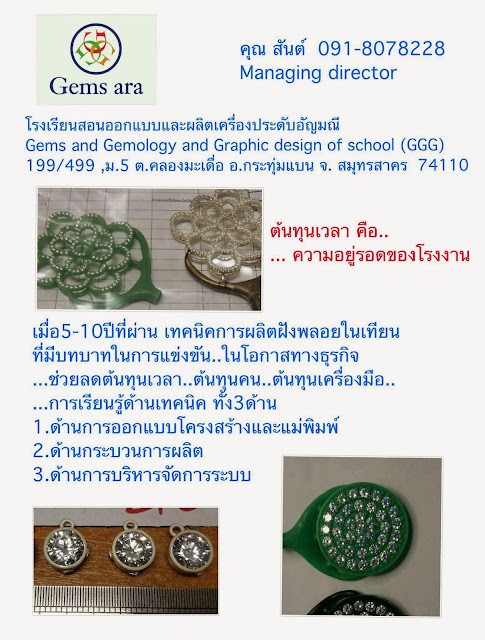MODEL MAKING
Master models must be adapted for stone in wax casting. The shrinkages that occur during the rubber moulding, waxing and casting process have a critical impact on the setting of the stone.
It is necessary to engineer the master pattern firstly to allow the stone to “click” into the wax easily and securely and secondly to ensure a good setting in spite of all the shrinkages during casting.
The master model requires very strict dimensional control to maintain stone integrity and quality results. All shrinkage factors must be accounted for when designing the stone in wax master model: metal shrinkage, moulding shrinkage and injection wax shrinkage. Not accounting for all of the shrinkage factors can cause stone breakage later in the process. Remember that the master is the benchmark for all processes to follow and the quality of the master directly affects the quality of the end result. Stone in wax casting can be a costly process if not thought through and controlled explicitly.
It is possible to adapt the master model yourself and many companies already do this. However it is a complicated process and requires precision engineering work and exhaustive testing to ensure the correctly functioning master pattern. SRS propose Clickset™ master settings or their own stone in place master model making service which will allow jewellery companies to bypass this most complicated stage and to start stone in wax setting immediately.
Make sure that the master model for stone in wax is finished down to a 4/0 emery finish or polished to a high lustre for rhodium plating if desired.There should not be any tool marks in the master model; it should look like you expect a fine finished jewellery piece to look.When using the Clickset products make sure to file and shape the components as desired, do not hammer or bend them to fit a contour as this will result in severe distortion of the master product and stones will not fit properly in the wax and give poor results.
RUBBER MOULDS
We recommend standard organic rubber like Castaldo white or Gold label as the preferred rubber for stone in wax setting.
Properly designed master models for stone in wax casting will have the built in tolerance for standard organic rubber moulding procedures. When using the CLICKSET master components do not mould the master model using any RTV or 0-1% shrinkage mould materials, the tolerance for organic rubber moulding is built into the master on the front end, using zero percent moulding materials may result in stones being loose in the metal pattern after casting. Please be aware that not all models will shrink by the same amount.
When cutting the mould to remove a stone in wax master model be sure to hide the parting lines as much as possible. In the case of the CLICKSET master, place the internal parting line on the seat nibs not where the stone will seat. Parting lines can translate into flash or an edge that could possibly cause a stone to break later in the process. Also, carefully place any external parting lines on edges of the master pattern for ease of clean up and aesthetics. As with all mould making procedures, ensure that the wax model is properly vented to reduce any defects when shooting the wax into the mould. It is extremely critical that the quality of the injected wax pattern for stone in wax setting be of the highest quality without any defects in the wax or on the wax pattern surface. Cut moulds so that wax patterns pull easily without distortion to the overall design.
http://www.srs-ltd.co.uk/technical/stone_wax_setting.html




















































